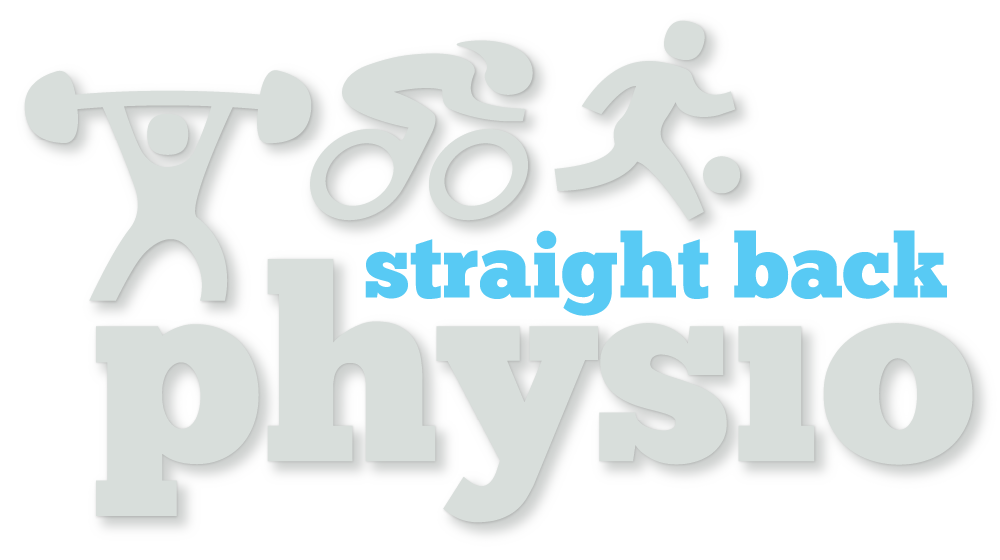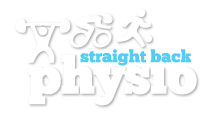Back pain treatment in Cheltenham
expert care for lasting back pain relief
Our backs are fundamentally flawed, its not just getting old; they aren't built to endure the pressures of upright walking, let alone running. This is why many patients experience back ache when running, or by bending and stretching.
Back pain is one of the most common health issues, affecting people of all ages. Back pain can significantly limit daily activities, whether it’s caused by poor posture, injuries, or underlying medical conditions.. We recommend you use a physiotherapist for back pain who will focus on restoring function and reducing your discomfort.
Physiotherapy offers a safe, non-invasive approach to managing back pain through targeted exercises and treatments. Don't need to let a sore back hold you back,
book an appointment with today and take the first step towards a pain-free life.

“Thanks to Straight Back Physio my back pain has eased considerably. They diagnosed my condition, explained it so I could understand what was going on and with massage, acupuncture and exercises helped me recover within a few months. I would absolutely recommend them to anyone with a back problem.”
Becky, Google review
lower back pain
Experiencing a sore lower back pain during running or walking is frequently a sign of muscle fatigue or improper posture.
Typically, this can be managed at home with rest and pain drugs. However, if the pain is persistent or keeps coming back, it might signal a more serious underlying issue which requires investigation by a physiotherapist.
It's worth noting that four out of five individuals will encounter lower back pain at some stage in their lives, making it one of the top reasons for doctor visits.

- Strains and sprains. These occur when muscle fibres stretch or tear such as by lifting something that’s too heavy, or by lifting it wrong. But also by sneezing, coughing, twisting, or bending over. A strain is an injury to a muscle or tendon whilst a sprain is an injury to a ligament. Mild injuries heal in 1-2 weeks by rest, ice, compression and elevation (RICE), physiotherapy helps moderate injuries heal in 2-6 weeks, but severe injuries may take several months.
- Herniated Disc.
Discs cushion the small spinal bones or vertebrae. Spinal discs can bulge or tear from their position in the spine and press on a nerve, causing significant pain. As you age, discs sometimes flatten and offer less cushion. An exercise or physiotherapy program is best done as a controlled, gradual, and progressive series of exercises.
The average time it takes a herniated disc to heal is 4-6 weeks, but depending on the severity, and where it occurred, it could take anything from a few days to several months.
- Spinal stenosis. This is a condition that occurs when the spinal column is too narrow for the spinal cord. It can result in something pinching the spinal cord, which can cause severe sciatic nerve pain and lower back pain. Physiotherapy can decrease the pain and provide the knowledge of how to correct posture, avoid positions and movements that make pain worse, and complete everyday activities in a way that avoids increased strain on the lower back.
- Arthritis. Lower back arthritis causes back pain and stiffness, and in some cases, limited range of motion. Physical therapy for arthritis may include exercises to improve joint mobility and tips on posture and movement that can help ease arthritis symptoms, reduce the need for pain medication, and even delay or avoid the need for surgery.
- Spondylolisthesis.
This condition, in which a bone or vertebrae in the spine slips out of place, usually results in back or leg pain. Physiotherapy, including massage, followed by a rehabilitation exercise program, is needed to improve muscle balance rather than just muscle strength alone.
middle back pain
The middle back tends to be more robust against injuries than the lower back due to its greater stability. Middle back pain after sleeping is often a result of nerve irritation or damage to nearby ligaments, muscles, and discs. Pain in the lower back, neck, or shoulders can increase the workload on your mid back, leading to unusual strain and new discomfort. Additionally, kidney infections or stones can result in severe pain that may be confused with mid-back problems, as referred pain from the kidneys is more common than you might realize, given their position just below the rib cage near the spine.
While some of the causes of middle back pain are outlined below, understanding the underlying cause is crucial for diagnosing the appropriate middle back pain treatment. Since the causes of middle back pain are not always straightforward, consulting a physiotherapist is the safest and most effective next step.
- Arthritis. Middle back arthritis, specifically thoracic spine arthritis which where the cartilage deteriorates, causes stiffness and limited range of motion. Physiotherapy for arthritis may include exercises to improve joint mobility and tips on posture and movement that can help ease arthritis symptoms, reduce the need for pain medication, and even delay or avoid the need for surgery.
- Herniated Disc. Discs cushion the small spinal bones or vertebrae. Spinal discs can bulge or tear and then press on a nerve, causing significant pain. As you age, discs can flatten and offer less cushion. A physiotherapy program is best done as a controlled, gradual, and progressive series of exercises. The average time it takes a herniated disc to heal is 4-6 weeks, but depending on the severity, and where it occurred, it could take anything from a few days to several months.
- Strains and sprains. These occur when muscle fibres stretch or tear such as by lifting something that’s too heavy, or by lifting it wrong. But also by sneezing, coughing, twisting, or bending over. A strain is an injury to a muscle or tendon whilst a sprain is an injury to a ligament. Mild injuries heal in 1-2 weeks by rest, ice, compression and elevation (RICE), physiotherapy helps moderate injuries heal in 2-6 weeks, but severe injuries may take several months.
- Poor Posture. This isn’t due to laziness or apathy, its related to physical weaknesses in our bodies. Poor posture leads to excessive strain on muscles and ligaments and weakens core muscles needed to keep you upright and healthy. Physiotherapy can help people explore a range of postures and movements, enhancing their ability to adapt to different activities and environments comfortably.
- Osteoporosis. This can cause the bones to weaken and increase the risk of fractures. People with osteoporosis in the back can experience severe back pain due to strains or compression fractures. Physiotherapy treatment for osteoporosis usually involves a selection of exercises tailored to your individual needs. These are designed to strengthen key muscle groups that support and stabilize areas of weakness to protect bones and improve balance which decreases the risk of falls.
- Aging. As we age natural changes occur, such as the cartilage fades and discs lose fluid causing them to narrow, this results in pain and stiffness as the bones rub against each other. Middle back pain can also be brought on by thinning of the bones, and loss of muscle mass. Aging is inevitable, but the pain associated with it does not have to be. Maintaining a good posture is important along with maintaining a healthy weight and regular exercise.
upper back pain
Upper back pain is less frequent than lower back pain because the bones in that region are less mobile, primarily serving to protect essential organs.
Prolonged sitting at a desk can lead to stiffness in these joints causing upper back pain between shoulder blades. This causes many people to adopt a posture of rounded shoulders and a hunched upper back, resulting in tight chest muscles and weakened upper back muscles. Even outside of desk work, activities such as driving, watching TV, eating, texting, cooking, and cleaning often involve a flexed position as well!

- Poor Posture. The common cause of upper back pain when running is poor posture and is related to physical weakness. Poor posture leads to excessive strain on muscles and ligaments and weakens core muscles needed to keep you upright and healthy. Physiotherapy can help people explore a range of postures and movements, enhancing their ability to adapt to different activities and environments comfortably.
- Arthritis. Upper back arthritis, specifically thoracic spine arthritis which where the cartilage deteriorates, causes stiffness and limited range of motion. Physical therapy for arthritis may include exercises to improve joint mobility and tips on posture and movement that can help ease arthritis symptoms, reduce the need for pain medication, and even delay or avoid the need for surgery.
- Herniated Disc. Discs cushion the small spinal bones or vertebrae. Spinal discs can bulge or tear from their position in the spine and press on a nerve, causing significant pain. As you age, your discs sometimes flatten and offer less of a cushion effect. An exercise or physiotherapy program is best done as a controlled, gradual, and progressive series of exercises.
The average time it takes a herniated disc to heal is 4-6 weeks, but depending on the severity, and where it occurred, it could take anything from a few days to several months.
- Strains and sprains. These occur when muscle fibres stretch or tear such as by lifting something that’s too heavy, or by lifting it wrong. A strain is an injury to a muscle or tendon whilst a sprain is an injury to a ligament. Mild injuries heal in 1-2 weeks by rest, ice, compression and elevation (RICE), physiotherapy helps moderate injuries heal in 2-6 weeks, but severe injuries may take several months.
- Whiplash.
High speed snapping of the neck causes an overstretching of the muscles, tendons, and ligaments of the joints of the neck that travel down and across the upper back. Physiotherapy is one of the most effective treatments for whiplash, in may include massage, manual manipulation, and exercises to strengthen muscles and speed up the healing process.
- Myofascial Pain.
This stems from problems in the connective tissue of the back, it usually begins after an injury of overuse, but chronic myofascial pain may last long after the initial injury. Physiotherapy may involve a combination of exercises, manual manipulation, massage, dry needling (acupuncture), and shockwave therapy.
- Fibromyalgia. This is a chronic condition characterised by widespread pain in the muscles, tendons, and ligaments of the body. Whilst there is no known cure for fibromyalgia physiotherapy may help relieve the symptoms of pain, improve energy levels, maintain or improve mobility, and reduce stiffness and fatigue.
Book now
In Cheltenham, Gloucestershire, we provide a comprehensive approach to get you free from back pain. We utilize a range of recommended therapies which are specifically designed to help you stay free from pain and injuries. Our preventative services are aimed at supporting your overall well-being and boosting your activity levels so you can get back to where you were before injury.
Faster recovery is our aim, our chartered physios can usually get you back to the activities you can't do now within 4 to 8 sessions.
We understand that some people may want to find out a bit more about the cost before they book an appointment at our physiotherapy clinic. Our unique
save as you recover packages can save you up to 20% on the cost of a single session.
Insured
For insured clients we can either work directly with your insurance provider or offer receipts for cash-based plans, allowing you to reclaim your expenses.
Not Covered by Insurance
If you want see the best physiotherapist in your area, feel free to book an appointment at our Cheltenham physiotherapy clinic without needing a referral from your GP.
Why Choose Us
No other local physiotherapy clinic can match our level of expertise and rehabilitation services, thanks to our extensive experience and in-house gym facilities. You'll receive the full benefits of physiotherapy through a tailored combination of interventions designed to guide you on your path to recovery.

